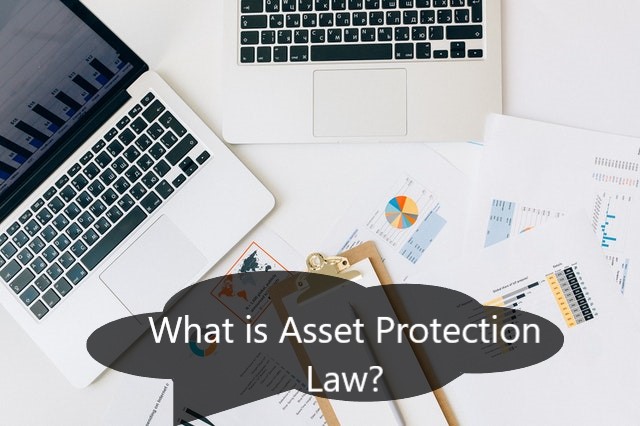Asset Protection
Key Takeaways:
- Asset protection involves protecting personal and business assets from civil money judgments.
- Asset protection is similar to bankruptcy: filing for bankruptcy is preferred for those with little assets, whereas asset protection plans are more practical when the debtor has significant assets.
- The four threshold factors evaluated in each asset protection case include the identity of the person involved in asset protection planning, the claim’s nature, the identity of the creditor, and the nature of assets.
- In the United States, asset protection laws vary across all 50 states.
- Corporations, partnerships, and trusts are some of the most common legal instruments used to shield assets.

What is Asset Protection Law?
Asset Protection, also known as Debtor-creditor Law, is a collection of legal techniques and a body common that focuses on protecting assets from individuals and businesses from civil money judgments. Asset protection planning is designed to protect assets from creditors, without perjury and tax avoidance.
Asset protection planning refers to the various methods that can be used to protect assets against liabilities from elsewhere. It is not to be confused with Limiting Liability. This refers to the ability to limit or stop liability for the asset or activity that it arises. There are very few assets that are protected from creditors by law. Common examples are home equity, certain retirement plans, interest in LLCs, and limited partnerships. Even these are sometimes difficult to reach. Assets to which one doesn’t have a legal title are almost impossible to reach. It is possible to transfer legal title to assets to a trust, agent, or nominee in many cases. However, the trustee retains all control.
Asset protection is similar to bankruptcy. The bankruptcy route is preferred if a debtor does not have enough assets. Asset protection is more practical if the debtor has substantial assets.
These are the four threshold factors, which are either implicitly or explicitly analyzed in every asset protection case:
The identity of the person involved in asset protection planning
Is the debtor an individual? If so, is the spouse also liable? Is it possible to make a transmutation agreement if the spouse is not liable? Is it possible to enter into a transmutation agreement if the spouses are engaged in activities that are equally likely in resulting in lawsuits? Or is one spouse more likely than the other to be sued?
Did an individual or entity guarantee the entity’s debt if the debtor was an entity? Is it likely that the creditor can pierce the corporate veil and get assets from the owners? Is there any statute that makes the individual personally responsible for the obligations of an entity?
The claim’s nature
Is there any specific claim or is the asset protection taken to protect yourself from lawsuits?
What assets are enumerable by the judgment if the claim is reduced to a judgment?
Is the claim voidable?
What is the statute of limits for filing a claim?
The identity of the creditor
How aggressive is the creditor?
Is the creditor a government agency or an individual? Is the taxing authority?
The nature of the assets
In what manner are assets exempted from creditors’ claims? The homestead exemption and the exemption of assets in qualified plans, i.e., how much protection is provided by it. assets in a plan that is subject to the Employee Retire Income Security Act (ERISA).

Asset Protection Law in the US
Certain assets are exempted from creditors by the United States federal bankruptcy laws. The laws vary from state to state, but often include exclusions for certain equity in personal residences, individual retirement accounts, clothing, or other personal property. Some states permit asset protection for self-settled trusts (trusts in which the creator or settlor of the trust is included as a possible discretionary beneficiary), while others do not.
People who own a limited partnership, corporation, and limited liability company in all fifty states have protection from liabilities. Many states limit the rights of creditors of limited partners or members of an LLC. This provides some protection for assets from creditors.
Some laws allow creditors to break through the corporate veil and pursue the owners of the entity for their debts. A creditor may be able to access an entity’s assets by bringing a constructive asset protection trust case or a claim for reverse piercing.
Domestic Asset Protection Trust vs. Offshore Asset Protection Trust
Domestic asset protection trusts protect significant assets from creditors. Offshore asset protection trusts are similar to domestic asset protection trusts except they are formed in a foreign country. Foreign asset protection trusts require creditors to adhere to the laws of the government agencies in the country in which the trust was formed.
Importance of Asset Protection Planning
A comprehensive asset protection plan aims to reduce or eliminate risk by protecting your personal and business assets from creditors. Many small-business owners don’t realize the risks and options that could harm their business. A plan to protect your assets and deter potential claimants is called asset protection and can be put in place before a lawsuit or claim.
Asset-protection strategies use separate legal structures such as corporations and partnerships. Your assets and the type of creditors that are most likely to make claims against them will determine the best structure for you.
Internal and External Claims on Assets
Creditors can only sue for internal claims if they have the assets of one entity (e.g., a corporation). If a corporation owns real property, and someone falls on it, the liability of the injured party is to pursue the assets of the corporation (i.e., the real estate). This assumes that you didn’t cause the injury.
External claims can be made against you as well as the assets of an entity. If you were the owner of a truck belonging to the same corporation and you negligently drove it into pedestrians, you could be sued by the injured as well as the corporation. Any judgments from corporate assets can also be satisfied from your assets.
You will be able to plan better and protect your property and wages from garnishment. You should also know which assets are most vulnerable to claims.

Asset-Protection Strategies
Corporations, partnerships, and trusts are some of the most common legal instruments used to shield assets.
Corporations
Corporations are a type of business organization that is created by state law. The legal ownership of the corporation is in the shareholders. This is evidenced by stock shares. Each shareholder has the right to elect a Board of Directors responsible for the overall management and supervision of the corporation. The officers, which include the president, secretary, and treasurer, are elected by the board of directors. They have the authority to manage the corporation’s day-to-day operations. In many states, one person can serve as the sole director and hold all corporate offices.
There are many types of corporations that can be used to provide asset protection, including business or C Corporations, S Corporations, as well as Limited Liability Corporations (LLCs). Corporations are a great asset-protection tool because they have limited liability for their directors, officers, and shareholders (principals). Corporate principals are not personally liable for corporate debts, breach of contract, or personal injuries to the third party caused by the corporation, its employees, or agents. A creditor can only pursue corporate assets to settle a claim. While the corporation might be held liable or responsible for certain claims, it is not obligated to do so. Corporate debts cannot be claimed or seized from the assets of corporate principals. This protects the corporation against personal liability and distinguishes it from other entities such as trusts or partnerships.
Providers of personal services are one exception to the limited liability of corporate directors. Personal service liability covers work performed for or on behalf of another person by lawyers, accountants, and financial professionals. A doctor may still be liable for damages resulting from the treatment of a patient if he forms a corporation or works as an employee.
A corporation can only offer liability protection if it is a distinct and separate entity from its officers or shareholders. A creditor may try to show that a corporation does not act as a separate entity, but rather as its alter ego or officers. This strategy, known as piercing the corporate veil, allows the creditor access to assets owned by shareholders if it is proven to be successful.
S Corporations
An S corporation is similar in structure to a C crop, except that it can make a tax-exempt special IRS tax choice to allow corporate profits to pass through the company and to be taxed at the shareholder level. S corporations have the same liability protection as C corporations, but the S corporation must meet additional requirements.
Limited Liability Corporations
This entity was created due to the additional formalities that were imposed on S-corporations.
General Partnership
A general partnership refers to a written or oral association that includes two or more people who are involved in business activity. Each partner is responsible for all debts, even those incurred by others on behalf of the partnership. With or without the knowledge or consent of other partners, anyone partner can act for the benefit of all others.
This unlimited liability feature contrasts with limited responsibility for the owners of a company. Each partner is responsible for any negligence of the other partners and for any obligations arising from the partnership.
Limited Partnership
A limited partnership is authorized by state law. It consists of one or two general partners as well as one or several limited partners. If at least two legal entities or persons, such as corporations, are involved in the partnership, they are considered to be one partner. The general partner manages the affairs of the partnership. He or she is liable for all obligations and debts.
The limited partners are not personally liable for any debts or obligations of the partnership, other than their contribution to it. This protection means that limited partners have very little control over the management of the partnership. A limited partner who takes an active part in managing the partnership may lose their limited liability protection. They will be treated as a general member. The value of limited-partnership shares is diminished by this restricted control.
Asset Protection Trusts
An asset protection trust is an agreement between whoever created the trust (referred to as the settlor or grantor), and who will manage the assets of that trust (the trustee). The trust stipulates that the grantor will transfer certain assets to the trustee. The trustee will then hold and manage these assets for the benefit of the beneficiary. An asset protection trust is created during the lifetime of the grantor. A trust created at death through a living trust or will is called a testamentary trust.
The Bottom Line
The creation and implementation of a comprehensive asset protection plan can affect almost all aspects of your business. The plan’s purpose is to safeguard your business assets within your business operations. It is possible to protect your business by using legal concepts and entities that are honest and lawful. It is not asset protection planning to deceive other businesses or individuals.
To create an asset protection plan that is most effective for you, consider hiring an asset-protection expert, such as Ideal Tax, (888) 224-3004. We offer a free tax consultation.
Ideal Tax Solution Representation




